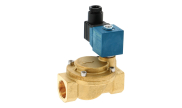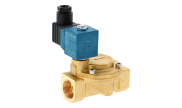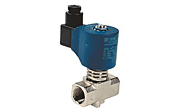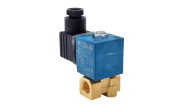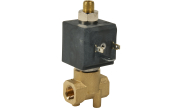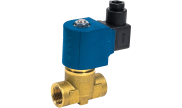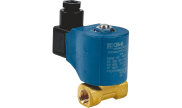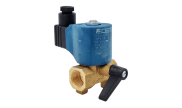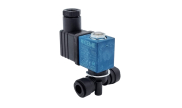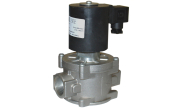Local Storage seems to be disabled in your browser.
For the best experience on our site, be sure to turn on Local Storage in your browser.
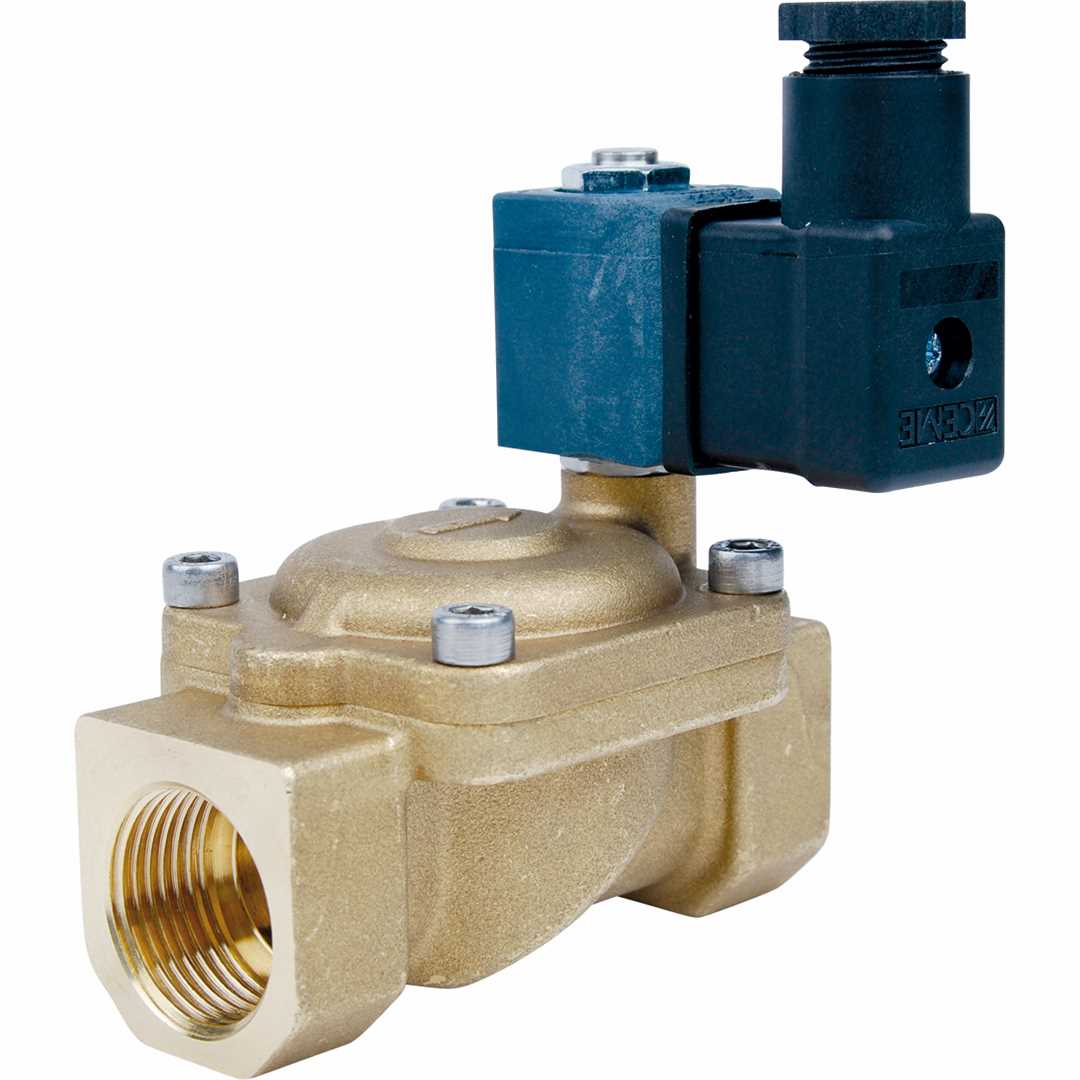
Solenoid valves
What is a solenoid valve?
A solenoid valve is fitted with a membrane and actuated by an electromagnet, allowing the solenoid valve to be operated remotely. It is most of the time used to cut off fluids, to drain tanks, or for bypass systems. It is widely employed in a great number of applications: water treatment, compressed air, heat transfer fluids, hot water, cold water, glycoled water networks, fire, gas, or fuel networks.
How does a solenoid valve work?
A solenoid valve has two different parts:
- a body, mainly supporting inlet and outlet ports that are closed by membranes;
- a magnetic head, made up of a core, a coil, and of one or several springs.
A solenoid valve works as follows: electric power goes through the coil, creating a magnetic field. The core moving inside the magnetic field controls the membrane, thus opening or closing the valve. There are two different types of solenoid valves:
- Servo-assisted solenoid valves, or internally piloted solenoid valves, require an upstream/downstream pressure differential. The control coil only sends a signal to open or close the valve;
- Direct-acting solenoid valves do not need any pressure differential. The electrical coil directly opens and closes the membrane. That is why it needs more electrical power.
Simple, compact, cost-effective, solenoid valves can only be used on clean, non-viscous, and non-aggressive fluids. They have a limit on diameter and are subjected to significant pressure drops.
How to choose a solenoid valve?
Several key features must be taken into account when selecting a solenoid valve:
- Pressure
- Temperature, as is determines the membrane material
- Fail-safe position (normally closed or normally open). Keeping the device on can lead to premature degradation of the coil.
- Coil voltage
Syveco’s offer
Syveco offers several references, with ¼’’ to 3’’ diameters and brass, aluminium, cast iron, or stainless-steel bodies. Depending on the models, membranes are in NBR, EPDM, EPDM KTW (ACS valves), or FKM. Different voltages are available for our solenoid valves (230V AC, 110V AC, 24V AC, 48V AC, 12V DC, 24V DC). The fail-safe position can be normally open or normally closed. Intended for a wide range of uses, our solenoid valves come from renowned brands:
- All fluids: ESM 86, ESM 87, EST 93, ESV 90, VSO 84 types from CEME
- Fuel: CEME EST 93 and MN 15, MN 28
- Compressed air: CEME 83-20
- Steam: CEME ESV 90;
- Gas: MADAS M16/RM, M14/RM
- Corrosive fluids: SHAKO SPU 225, SPU 225 ATEX, SPU 220, SPU 220 ATEX
- Unclogging: MECAIR VEP and VNP
- High pressure: 248 HP
- High flow EVB 82, RF PN16 DN50 to DN20 flanged
Last, most of our solenoid valves are ACS and ATEX certified.



